Helping children sleep better in childhood
Western life doesn’t let us follow sleep traditions. What can we do instead?
“So,” I ask. “What surprised you about white people?”
My friend looks at my husband and children who are making sure that we’re ready to break camp at dawn tomorrow. As the shadows of the palms in our little forest clearing rapidly lengthen, and the sunlight is yellowing, my daughter is kicking sand onto the fire and my son is packing his little clothes bag into the carry-all. I had been checking that my alarm was set early enough, feeling the weight of my heavy heart, when my friend had emerged silently from the rainforest to say his goodbyes. He looks at our little camp.
"Why do you put your children in a separate mosquito net?”
And then after another moment’s reflection.
“And why do white people eat so many coconuts?"
The latter question was much easier to answer: we’d quickly discovered that villages of subsistence farmers don’t have a market, or even a shop for dietary staples. We could buy a fishing hook in some places, but never a potato. The children got meals at school, but for us adults it had been a very hungry few months. Fortunately for us, there were old coconut palms that now towered so high above the village that they were effectively out of sight and mind. Planted by a more coconut-loving generation, their nuts had now fallen out of favour, and was left to rot where it fell. We could have as many coconuts as we could collect. Hence, coconut had become a major part of our diet.
And the first question? We couldn’t imagine sleeping five people in fewer than three hammocks. One for my six-foot-five partner, one for my six- and four-year-old children, and one for myself and my eighteen-month-old baby. The more complex answer is that his culture and mine have very different attitudes to child safety and risk. For him, children had freedom in the day and were kept very close to adults overnight. In my WEIRD culture, children have very little freedom during the day but are sent away from adults overnight. That cultural difference has a lot of consequences.
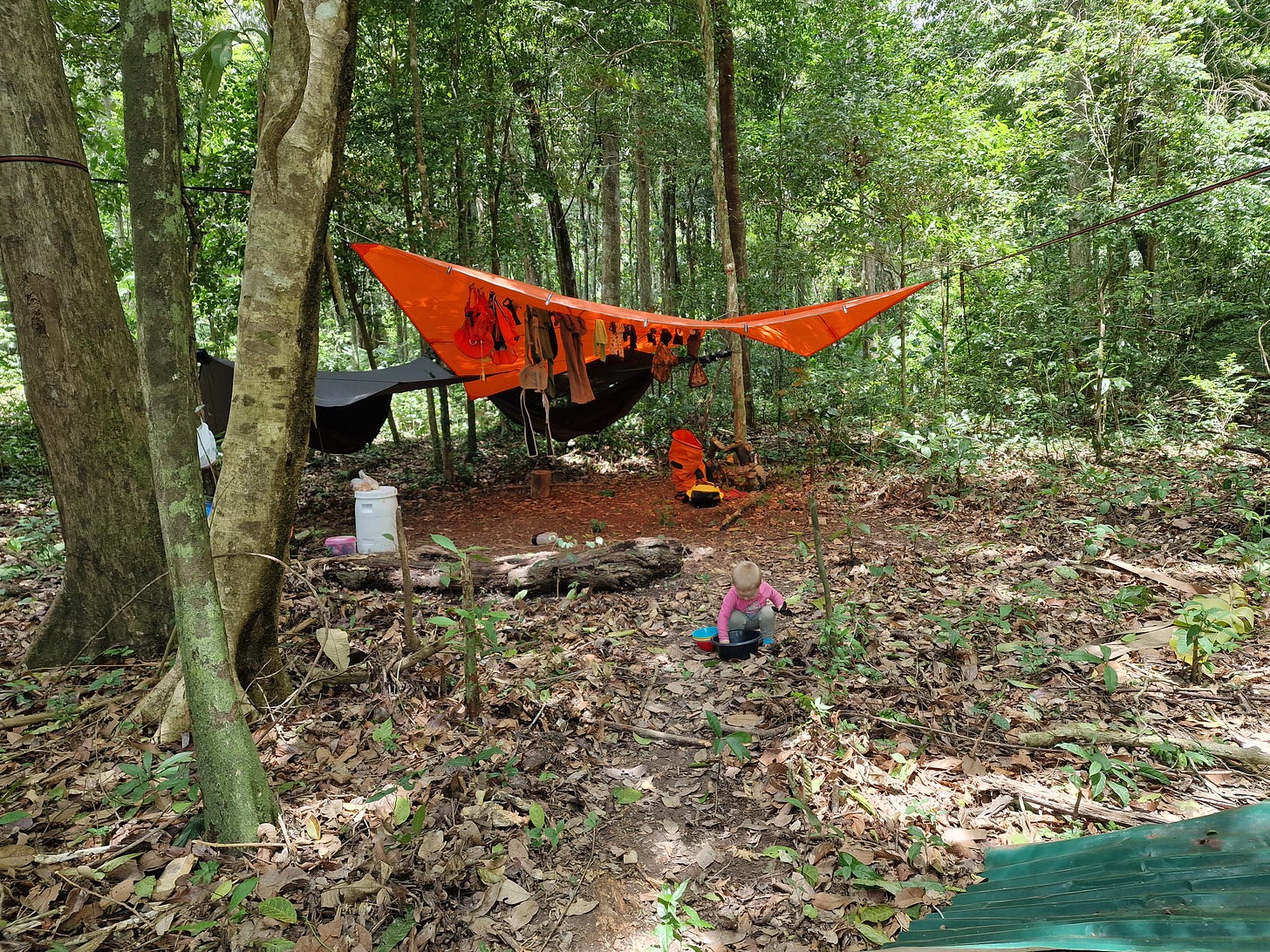
I went to a few mother-and-baby groups before we travelled. In each and every one, sleep was a hot topic. Justification for endless cups of coffee, odd socks, inability to remember people's names, you name it! But despite talking to a lot of mothers in Amerindian villages, I didn’t hear sleep mentioned once. Why?
Why do we sleep?
Sleep is not what we think it is. For our consciousness, sleep is “off”. It’s downtime. Relaxation. For the body, this couldn't be further from the truth. For the body, sleep is a frantic period of getting repair and growth done before the trials of daytime life begin again. For our brains, as well as structural maintenance, sleep is also the time when it's possible to transfer short-term memories into long-term storage and to run simulations that allow us to make the most of what we've learned. Different jobs are done at different stages of sleep. If you get enough sleep you can be happy and creative and alert and clever, and if you don't, you can't. Simple.
When it comes to sleep, there are two ways that childhood affects adulthood:
Firstly, getting enough high-quality sleep allows us to build our bodies, health, and social/academic foundations, all of which we rely on later in life.
Secondly, learning how to sleep easily in childhood allows us to get a lot of high-quality sleep in adulthood, which we will need to maintain those healthy bodies and social/professional investments.
In this article, I’m going to cover the first of these bullet points. In another, I’ll explore how our early sleep environment shapes our later sleep requirements.
Why children need lots of good sleep
First up, despite the fervent belief of all recent parents, babies and young children are built to get enough sleep. Their brains figure out the right time for sleep by combining ‘sleep signals’ from various sources and then shut their tiny bodies down, sometimes with theatrical inevitability into a bowl of porridge. Once shut down, their brains will keep them asleep until their bodies report that all repairs are completed and new learning has been consolidated, and then wake them up to eat, interact, and cause further chaos.
When they're very small, that ‘shut-down’ happens a lot. Newborn babies sleep for 14-16 hours per day, usually in chunks throughout the day and night. As they get older these periods of sleep typically consolidate. Current National Sleep Foundation (NSF) and American Academy of Sleep Medicine (AASM) guidelines recommend that children aged 6 to 13 years have between 9 and 11 hours of sleep per night.
Why 50% of WEIRD kids have a sleep problem
However, roughly half of WEIRD children experience a ‘sleep problem’. So, what's going wrong?
The cynical answer is that the common definition of ‘sleep problem’ (ie. “a sleep pattern that is unsatisfactory to the child or parent”) might have something to do with it. Is the baby waking you up at ungodly hours by making horrendous noises? Yes. Is that unsatisfactory? Yes! Does that mean there's anything wrong? Possibly not. Babies of many species do that. The widely-held,-but-still-erroneous view that a good baby sleeps through the night is handed down from studies on babies experimentally separated from their mothers and fed on large measured amounts of cow milk (i.e. a very not-normal set-up). NB - although frequent waking is common to young animals generally, WEIRD babies do seem to be waking up more frequently than they used to. More on this later.
However, there is a less cynical answer too. The reason WEIRD kids aren't getting enough sleep may have something to do with disruptions to sleep ‘signals’.
There are four major signals that the brain (child or adult) uses to time the onset of sleep.
Concentration of adenosine in the blood - Free adenosine is a (potentially deliberate) byproduct of energy metabolism (we all remember ATP⇆ADP, yes?). The amount of it in the blood is a pretty good proxy for ‘the amount of hard work done recently’, which correlates well with ‘how urgent is a maintenance break’. (NB. Incidentally, this is how caffeine works to delay sleep: it's an adenosine receptor blocker).
Circadian rhythm - The lives of most animals have an optimum opportunity for a break at about the same time each day. So, time of day gets a vote in the final ‘when to sleep?’ referendum.
Mirror neurons (or similar) - If other humans are sleeping, they probably know what they're doing. Our brains contain a system to encourage falling asleep when nearby people are falling asleep and staying asleep while they're staying asleep. Neat, eh?
And executive function - Even if you're exhausted, it's the middle of the night, and everyone nearby is asleep, you can still stay awake if you consciously decide to do so. The converse is true too: going to have a hard night later? You might be able to tell yourself to nap now. The conscious mind (inc. its experience of pain, cultural expectations, and prior sleep habits) makes a difference.
The relative weighting of these four signals will be different between children and adults. (NB. We like to flatter ourselves that Signal Four is more important for adults, and Signal Three is more important for infants. I guess that depends on which adult and which infant we’re thinking about).
Instantly, it becomes pretty clear why WEIRD kids might struggle to sleep:
Low adenosine - A sedentary day at school doesn't demand much energy metabolism, so doesn't liberate much adenosine into the blood.
Weak circadian rhythm - Little exposure to bright daylight early in the day and lots of exposure to bright, blueish device screens in the evening not only blunts the circadian sleep signal, but also delays it by a few hours.
Nobody to mirror - WEIRD culture dictates that children need their own room. Hard for their brains to subconsciously listen to their parents’ breathing (and base their own sleep on that) through a brick wall. It's hard enough from across the room (every single traditional culture cosleeps parents and babies together).
Disinterested executive function - If you've never had the chance to choose your own bedtime and, hence, never experienced the comparative reward of going to bed early and waking up feeling great, then why would you choose to do that? Also, if the understood alternative is staying awake reading or watching a device, then short-term reward beats long-term reward every time. We're monkeys, not androids.
Four for four! WEIRD culture, with its sedentarism, agoraphobia, fetishization of independence, and prioritisation-of-the-short-term manages to interfere with every single sleep signal children have. Added to the mouth-breathing/face-shape/snoring problem we’ve talked about previously, and our collective phobia of napping, and it's obvious why Western children end up sleeping less than kids in less industrialised settings.
There’s another signal that gets in the way of falling asleep and wakes us up while we are asleep. That’s hunger. And that’s the default one that parents assume when their baby wakes them up at night. The hunger hormone ghrelin is a powerful stimulus of wakefulness. And you know what disconnects ghrelin release from the amount of food we’ve eaten? Our old friend fructose. We know that eating a lot of sugary food while breastfeeding makes our milk sweeter, and we know that eating or drinking fructose stimulates our appetite. I suspect that part of the more-times-awake-per-night phenomenon may be thanks to our huge cultural sugar consumption.
Silver bullet
Wondering how sugar and fructose affect appetite and sleep regulation? This article explores the fructose survival hypothesis - how our enormous sugar consumption drives our life experiences....
So what can we do?
I have seen a lot of different ways for kids to sleep. Stacked hammocks. Tesselated floor patterns. In slings. On shelves. In prams left outside coffee shops when the temperature is well below freezing. A. Lot.
However, this is not an article about specific sleeping techniques that parents should use to get their kids to sleep. Sleep techniques are too personal to dictate a one-size-fits-all approach. They depend on the parents’ culture, support network, geography, attitudes, altitudes, and the level of their own sleep deprivation.
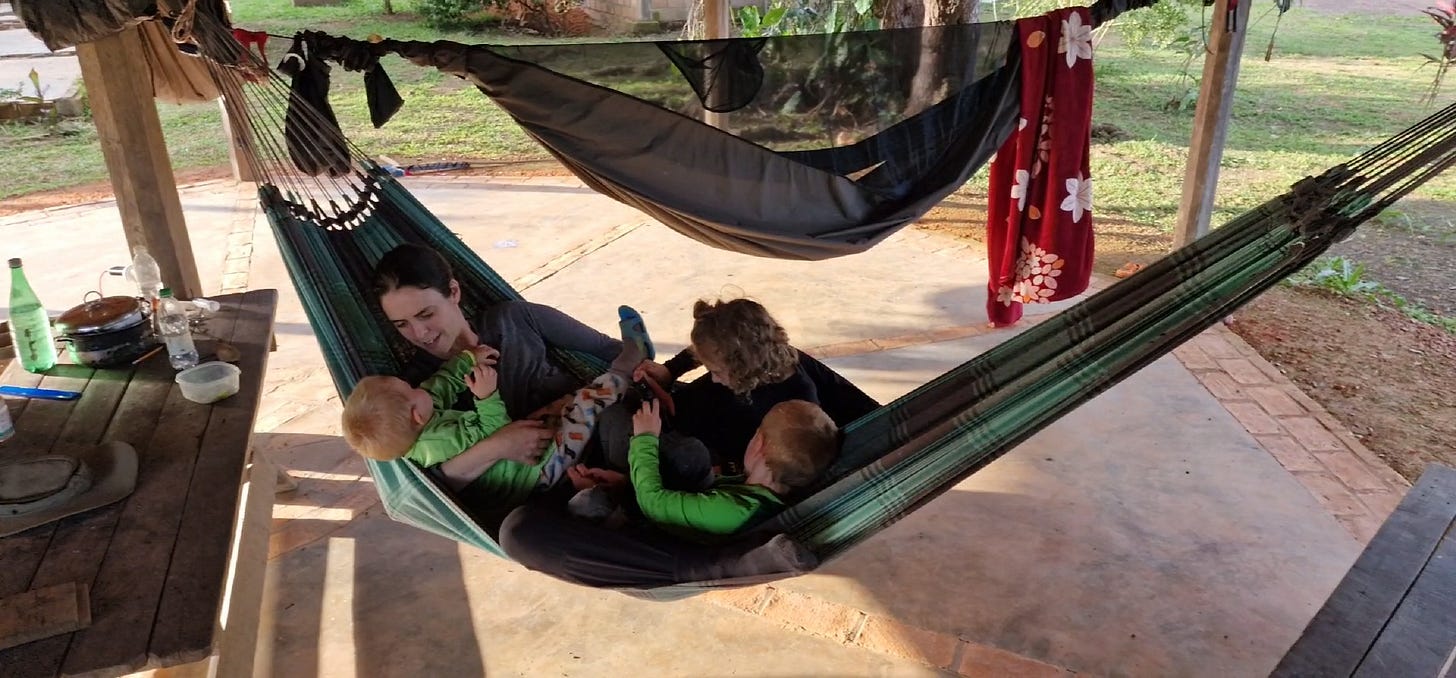
That said, there are guidelines that will help everyone. From a biological perspective, to achieve good sleep we need to:
Support the child's circadian rhythm development and maintenance.
Identify why a baby has woken and fix the specific problem.
Celebrate and value sleep to help children enjoy it.
So:
Supporting circadian rhythm
Children's circadian rhythms and sleep patterns develop during the first year of the baby's life. So, getting light exposure right for those first 12 months is critical. (NB. long-term negative health effects of exposing babies to abnormal light patterns is one of those things that is true in pretty much all mammals). To reiterate, if you’re wondering when to put the effort in with circadian rhythm, it’s in the first 12 months.
As children get older, light exposure is still important, but problems will show much more immediately (like the next day). Light from bedtime reading or using media devices will play havoc with circadian rhythm and sleep timing. It’ll also strongly promote short-sightedness, but that is another story.
Why are kids’ eyes growing too big?
This article explains how evening reading, among other things, promotes short-sightedness...
Falling asleep is easier after certain activities. More on which ones and how to use them in a minute.
Identifying and removing specific barriers to sleep
Babies wake frequently during the night. This is for various reasons. If the reason is not discovered and solved then the baby will not go back to sleep. This is known as Oh-my-god-why-are-you-crying Syndrome and can be devastating to everyone in the house. Learning to identify and solve the primary problem will mean everyone gets more sleep. Guaranteed.
Responding quick enough to catch the primary problem before it evolves into a secondary problem (i.e. the baby is now crying because it too is upset about all the crying) can be made easier in a number of ways. Baby monitors might one day be good enough to achieve this, but the rest of the world uses co-sleeping.
WEIRD public health advice now acknowledges that it is acceptable for babies to share a bed with their mothers. The NHS continues to say that separate sleeping is safer than co-sleeping, but it gives advice on how to reduce co-sleeping hazards. The American Academy of Pediatrics recommends room sharing but discourages bedsharing. However, given the negative effects on breastfeeding and milk supply of sleeping apart, this advice is likely to change in time.
Along with aiding temperature regulation, co-sleeping facilitates little and often breastfeeding (which is useful as we’ve discussed at length), and makes it much easier to understand when the infant needs the toilet.
(NB. Just as an aside, what are the odds that, if you’ve woken at night, you kinda need a wee? 80%? 90%? This is true for babies too. Give the poor tyke a chance to wee and he’ll go back to sleep in about 8 seconds. Keep trying to feed him and he’ll fuss until he cries, cry until he screams, scream until he wets himself, and then pass out. Elimination communication (which I still think needs a better name) is so so so good for improving parents’ sleep. And it also reduces colic and eases toilet training).
Once they’ve grown up a bit, a common barrier to returning to sleep after waking is being uncomfortable. That is something that they need to get over, rather than have solved for them. I’m going to talk about how we create picky sleepers in another article. Not this one.
Value sleep as a choice
Finally, parents can teach a child to celebrate and value sleep. In industrialised cultures, sleep is often seen as an annoying interruption in an otherwise productive life. A friend of mine, when she had her first baby, exclaimed in frustration, “She just sleeps all the time. She doesn't have time to learn!”. We have forgotten that sleep is when humans learn! We need to show kids that sleep is something to be valued, desired, respected, and decided upon. If they learn this when they’re young, it’s very easy to turn it into a choice and then a habit. And habits last.
How have you helped your children to value sleep? What’s worked for you? Please share your experiences to give us ideas for new things to try!
Hints and tips
Early interventions
Natural light - Baby has a year to work out what their sleep patterns are going to be in the long term. Help them with exposure to as much natural light (and natural dark) as possible. It’s 12 months. Most of us can pause our hermit tendencies for just 12 months.
Co-sleeping - Parents should consider the risk ratio based on the current evidence, not anecdotes from the seventies. Healthcare practitioners should also read up on the benefits (clue: there are many) and understand that different parents fall in different places on the long-term benefit vs. short-term risk spectrum.
Problem solving - For babies that wake up, parents should try to identify what is wrong and rectify that, rather than assuming the baby is always hungry. To do this, you’ll need tools including elimination communication, which needs a day to set up first. Start early if you can. The toileting reflexes are pre-installed and active from birth.
Napping - If babies are tired, let them nap. Sleep begets sleep. (This is to do with thalamic activation and is very cool. Look it up).
Childhood interventions
Model sleep decisions - Just like anyone else, children don’t feel a sense of reward from actions that weren’t their choice. Just like everyone else, children don’t build habits around things that they don’t find rewarding. Tell them about all the great things sleep does and how to feel the signs that their body is asking for sleep. Model deciding to go to bed when tired, and make staying awake the less rewarding option (i.e. no media, books, etc). But, where possible, make it their choice.
Shake it up - Don’t let kids become too set in their ways. make them switch beds, rooms, surfaces, noise levels, etc. to make sure they can sleep anywhere as adults. It’s a useful skill. More on this another time.
Interventions for everyone
Sleep pressure - Sufficient movement and time outside practically ensures a good night’s sleep. Works on babies, children, and adults (and pets).
Light - Make sure neither children nor adults have to deal with bright light (especially blue or blue/white light) any time after 18:00. Also, seriously, ensure children avoid close focus work (reading, scrolling, whatever) after the sun has set - it’s a great way to get myopia. And that’s a great way to go blind in old age.
It’s amazing how much easier life becomes after two good nights’ sleep in a row. School. Movement. Food choices. Relationships. Just everything. Even your immune system, digestion, and muscles work better. This is an area where us WEIRD Westerners can really learn a lot from more traditional cultures.
So, give it a try! Tell me how it goes. Tell a friend.
Good luck! And to all a good night!
You might also like:
Picky sleeping
You've just read about why WEIRD cultures make some aspects of child sleep harder for them, and the problems that arise from that. Our culture often dictates that we make other aspects really easy for them (especially around sleep environment), and this can cause different problems. More in this article.
Notes
Ghrelin and wakefulness in children: https://www.researchgate.net/publication/283241028_The_Association_Between_Sleep_Duration_and_Leptin_Ghrelin_and_Adiponectin_Among_Children_and_Adolescents
Adenosine and sleep: https://link.springer.com/article/10.1007/s10865-015-9617-6
Circadian rhythm and sleep: https://www.ncbi.nlm.nih.gov/pmc/articles/PMC9424753/
Mirror neurons and sleep: https://doi.org/10.1037%2F0893-3200.21.1.124
WEIRD children sleep less than kids in traditional cultures: https://doi.org/10.1038/s41598-019-53635-y




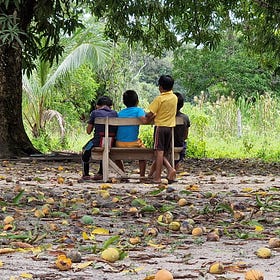
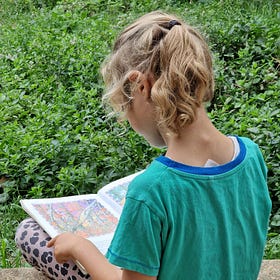
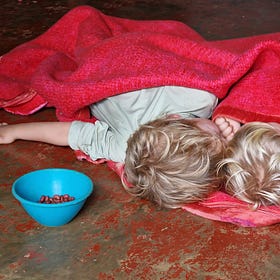


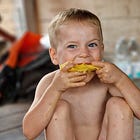
Fantastic article. So much to digest. Fascinated by the mirror neurones and going to look up thalamic activation!
Your experience of sleep behaviours of non-WEIRD humans is fascinating.
I wonder about similarities / differences between children living in the Tropics and those in extreme latitudes, say of Inuit race